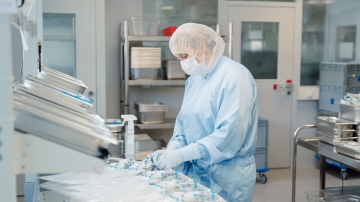Case Study: The relief through customized manifolds
Table of contents
ShowFinding the right Single Use Assemblies for Fluid Management
Without a doubt automated filling drug substance into single use bags will be the future in Biomanufacturing industry due to its efficiency and its approach towards sterility. However, single use assemblies for automated filling platforms lack flexibility once clients have special requirements or may go different ways.
One global life-science company consults biopharmaceutical companies in finding the right setup for tubings, manifolds, sterile connectors and all kinds of sterile consumables and often face challenges in provision of the applicable solution. In one scenario, one CMO opted for commercialized automated filling of small bags with a volume of 500ml. There were 1000 bags to fill per batch.
Challenges of market supply for sterile consumables
None of the single use manifold assemblies matched the requirements of the CMO. The supply of manifolds was solely standardized and had no option on customized requirements.
No room to adapt
With the possible options to date, it was only possible to fill 20 bags of 500ml per run – making it very inefficient and expensive with 50 runs and required single use manifolds until 1000 bags have been filled.
Delivery times
The pandemic in 2020 and its fueled stockpiling involved also had an impact on lifescience consumables. All of a sudden single use manifolds had longer lead times discouraging manufacturers in being dependent on single use products with lacking flexibility and availability.
Incompatibilies
The insecurity is aggravated by the fact that some single use manifolds are primarily made to fit only on selected filling platforms. The compatibilities
of manifolds to other platforms increased the dependency further and intensified the limitation of available manifolds on the market.
How modularity enables flexibility
Get to know the outcome of the case study and learn how modularity of different sterile consumables makes it easier to adapt to different scenarios while maintaining the fluid management at high sterility in a closed system.









